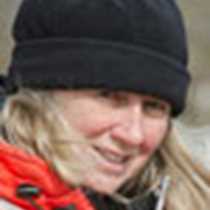Lithuania
Little by little we slip south, moving from one Baltic nation to another. United by a common past each country now proudly celebrates its individuality. Vikings no longer roam nor do the Hansa walls separate merchants from common peasants. Empire seeking kingdoms and occupying nations have settled peacefully, for now. All along our journey’s path golden drops of amber have glimmered in the periphery, always there but not fully demanding attention, until today. We have entered the heart of amber country.
Tiny Lithuania seems tethered to the Samland peninsula by the narrow Curonian Spit. Further south another thread reaches out to Poland. One could imagine these as matching necklaces of glowing amber beads sliding from productive mines near Kaliningrad. But these amorphous treasures are just as likely to appear washed upon the beaches, released from clasping clay by surging winter waves. Early man saw its potential as an item fit for barter and man’s desire for the polished beauty is little diminished even in this day and age. What did that Cretaceous woodland look like so very long ago, where conifers wept sticky resins in response to injury? No Baltic Sea existed then but swiftly flowing rivers rushed, grasping wooden giants that tumbled on their shores, releasing them only as their waters fanned out on delta flats. Glaciers bulldozed the land piling debris along the shores where we strolled today and within the clay sized particles that settled slowly hid copious quantities of resin changing ever so gradually. What tales these fossilized resins tell! They are not simply ornamental but are tiny time capsules from the past bearing insects, leaves and microbes perfectly preserved.
Lithuania’s port city of Klaipeda is a mix of old and new, having received severe damage during World War II. Stretching for 30 kilometers along the shore and yet only three blocks wide it looks to the future in spite of a rather sad past. Today it was our gateway to exploration. Like Lithuanians on vacation we ventured along the shore to the lovely town of Palanga where 1000 hectares of botanical park surround Gintaro Muziejus, the amber museum. From giant blocks of raw amber to archeological artifacts and species filled with entomological delights, we enjoyed each well-organized display.
But even this Baltic gold could not compete with the sound of the surf that drew us through towering woodlands to the edge of the sea. Maybe clouds are the Baltic’s unrecognized treasure. Nowhere else do they seem to pile into such massive towers decorating azure skies. They seem to wait for the sun to set when they can adore themselves in crimsons and golds. A rush of ecstasy can be found most days simply by looking up.




